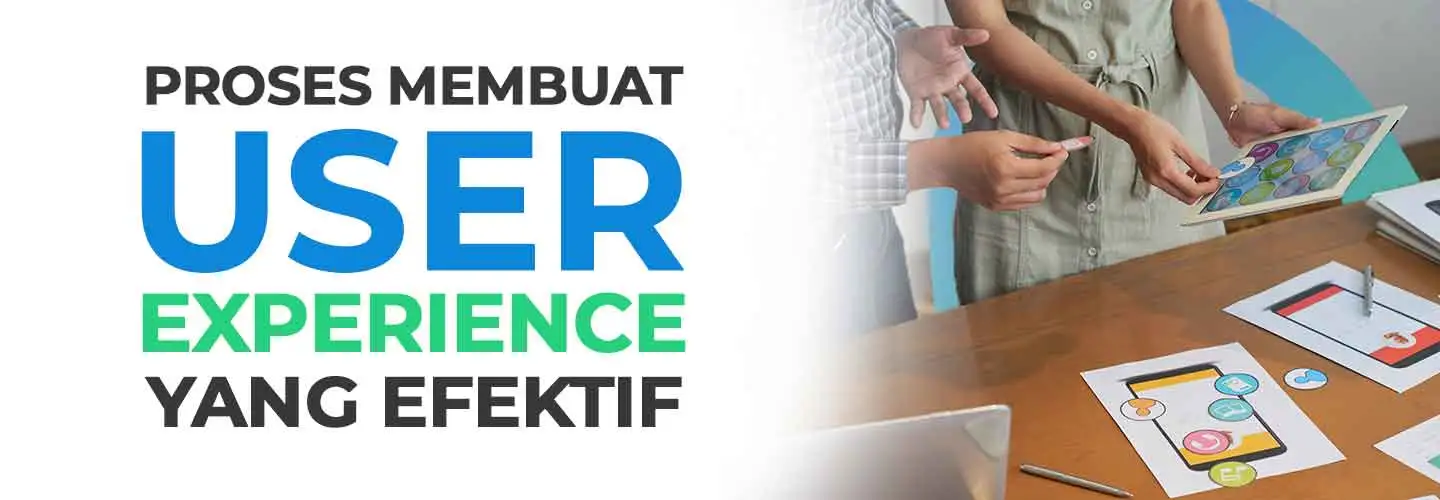User Experience: Definition, Benefits, and Implementation Process

User experience (UX) is often the determinant of the success of a digital product.
A bad user experience can make it difficult for you to find the information you need, or even feel confused by an overly complicated display.
That's why this one thing is very important in today's digital world and can help brands achieve success.
So, how exactly is the process of creating a good user experience? Check out the summary in this article!
Definition of User Experience (UX)
User experience (UX) is a term used to describe the overall experience someone feels when interacting with a product or service, be it a website, application, or physical device.
The main goal of UX design is to make this interaction as easy and comfortable as possible for the user.
Example: You buy a new cellphone. So, the user experience includes:
- Advertisement: You see an advertisement for the cellphone and feel interested.
- Purchase: The purchasing process is easy and fast.
- Packaging: The cellphone box is neat and easy to open.
- Usage: The cellphone is easy to use and functions well.
If all these aspects run smoothly, it means that the user experience felt by consumers can be said to be good.
Benefits of User Experience
Here are some benefits of user experience for businesses that you should know:
1. Happy Customers, Profitable Business
Customers are like guests who come to your house.
If they feel comfortable and treated well, they will most likely come back again. In fact, they may even invite their friends.
Likewise with good user experience. When customers are satisfied with your product or service, they will be loyal and will recommend it to their friends.
2. Cost Savings
It may sound contradictory, but investing in good user experience can actually save costs in the long run. How?
Simply put, when your product or service is easy to use, users do not need to contact customer service often for help.
This means you can save costs for the support team while increasing customer satisfaction.
3. Increase Conversion
Having lots of website visitors is great, but what is more important is how many of them end up making a purchase or using your service.
A good user experience can certainly increase the conversion rate. The way to do this is by making the process from "just looking around" to "finally buying" smoother.
4. Many People Will Like Your Brand
A good user experience can make your brand more than just a name or logo. In fact, it can create an emotional connection with users.
When users feel that your product or service can meet their needs, they tend to have positive feelings towards your brand.
5. Ready to Face Change
Generally, businesses that focus on user experience are usually more ready to face change.
Because, they are used to listening and adapting to user needs, making it easier to stay relevant in a changing market.
User Experience Implementation Process
Now that you know the benefits of user experience, let's understand the process of creating a good experience for consumers
Here is the process that you need to understand:
1. Research
A good user experience starts with research first. Where, UX designers will conduct interviews with users, surveys, and analyze competitors to understand the behavior, needs, and problems of target users.
Later this information will be very important for making design decisions.
2. User Personas and User Journeys
Based on the research results, designers will create what are called "user personas" which represent target users from various perspectives.
They also create a "user journey" that describes the steps users take when using the product.
From here, they can see where problems arise and how to fix them.
3. Organizing Information
To understand this process, imagine you enter a library. If the books are messy, it must be difficult to find what you need, right?
So it is with digital products. Therefore, UX designers design information architecture that makes it easy for users to find what they are looking for quickly and logically.
4. Wireframing and Prototyping
Before going into more detailed designs, UX designers will create a wireframe or rough sketch of the product's appearance. Later, this will help them test various ideas without focusing too much on visual details.
Next, they will create a more interactive prototype to simulate the real user experience.
5. Visual Design
Once the basic structure is ready, now is the time to create an attractive appearance.
UX designers will choose colors, fonts, images, and other visual elements that match the brand identity.
The goal is not only to make the product look beautiful, but also to strengthen the message and function that you want to convey.
6. Testing
The finished design will then be tested by real users.
UX designers will observe how people interact with their products, note any problems that arise, and collect suggestions for improvement.
This process is very important to ensure that the product is truly easy to use.
7. Continuously Refine and Perfect
The UX designer's work does not stop after the product is launched. Instead, they continue to collect feedback, make improvements, and adapt the design to the changing needs of users.
This is done to ensure that the product remains relevant and loved by users in the long term.
Through the explanation above, it is clear that user experience is not only about making the product look attractive, but also about creating a pleasant, easy, and satisfying experience for users.
Investing in good UX will bring many benefits, from increasing customer satisfaction, reducing operational costs, to increasing conversions and building a strong brand image.
Want to learn more about digital business? Immediately join the Digital Marketing Fundamental program from prasmul-eli.
In this program, you will be taught to understand the concept of digital marketing to how to implement it in the company!
